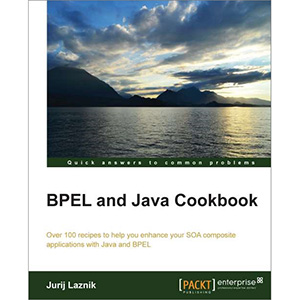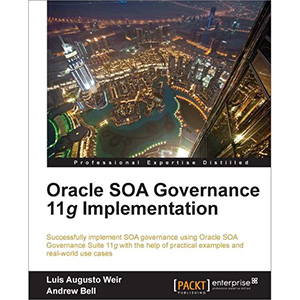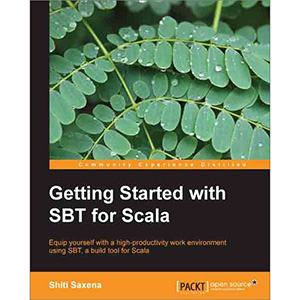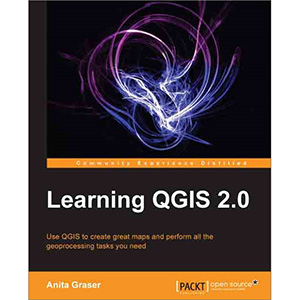Wow! eBook: BPEL and Java Cookbook - 6 new eBooks |  |
- BPEL and Java Cookbook
- Oracle SOA Governance 11g Implementation
- Twilio Cookbook
- Learning OMNeT++
- Getting Started with SBT for Scala
- Learning QGIS 2.0
| Posted: 20 Feb 2014 09:06 AM PST
Book DescriptionThe Business Process Execution Language (BPEL) has become the de-facto standard for orchestrating web services. BPEL and web services are both clamped into Service-oriented Architecture (SOA). Development of efficient SOA composites too often requires usage of other technologies or languages, like Java. This Cookbook explains through the use of examples how to efficiently integrate BPEL with custom Java functionality. If you need to use BPEL programming to develop web services in SOA development, this book is for you. BPEL and Java Cookbook will show you how to efficiently integrate custom Java functionality into BPEL processes. Based on practical examples, this book shows you the solutions to a number of issues developers come across when designing SOA composite applications. The integration between the two technologies is shown two-fold; the book focuses on the ways that Java utilizes the BPEL and vice-versa. With this book, you will take a journey through a number of recipes that solve particular problems with developing SOA composite applications. Each chapter works on a different set of recipes in a specific area. The recipes cover the whole lifecycle of developing SOA composites: from specification, through design, testing and deployment. BPEL and Java Cookbook starts off with recipes that cover initiation of BPEL from Java and vice-versa. It then moves on to logging and tracing facilities, validation and transformation of BPEL servers, embedding of third-party Java libraries into BPEL. It also covers manipulation with variables in BPEL different techniques of Java code wrapping for web service usage and utilization of XML façades. After reading BPEL and Java Cookbook you will be able to circumvent many of the issues that developers experience during SOA composite application development. What you will learn from this book
Approach Who this book is for Book Details
Related Books
The post BPEL and Java Cookbook appeared first on Wow! eBook. |
| Oracle SOA Governance 11g Implementation Posted: 20 Feb 2014 09:02 AM PST
Book DescriptionService-oriented Architecture (SOA) is an architectural style created to address the challenges posed by today's highly distributed, fast-paced computing. This goal is achieved by constructing business-focused software systems from loosely coupled, interoperable building blocks called Services. Organizations often fail to successfully implement SOA due to a lack of effective governance. Oracle SOA Governance is a comprehensive, service-orientated architecture governance solution that is designed to make the transition to SOA easier. “Oracle SOA Governance 11g Implementation” illustrates how to successfully implement SOA governance in your organization. To achieve this, we describe how goals and objectives need to be clearly laid out and used to align governance processes with governance tools, governance tools with people, and people with the different roles and responsibilities that are required to implement effective governance.< p> “Oracle SOA Governance 11g Implementation” begins with a short but concise overview of SOA governance. We then go to explore real world examples, based on previous experiences and working solutions, in order to learn the concepts of Oracle SOA Governance Suite. We will also learn how to implement an OER-centric SDLC process to address your organizations design-time governance requirements. Next, we will explore OSR, and discover how to use it to expose service implementations to consumers based on UDDI concepts. We will explore the features available within Web Service Manager (WSM), Oracle Enterprise Manager (OEM), and Business Transaction Manager (BTM). Finally, we discover how OER can be extended to govern Oracle Application Integration Architecture (AIA) implementations. Discover and learn how to use Oracle SOA Governance Suite to address your specific design-time and runtime governance challenges. What you will learn from this book
Approach Who this book is for Book Details
Related Books
The post Oracle SOA Governance 11g Implementation appeared first on Wow! eBook. |
| Posted: 20 Feb 2014 08:58 AM PST
Book DescriptionHave you ever wanted to integrate phone features into a project you were working on? Maybe you wanted to send SMS messages to your customers about the latest sales? Maybe you want to set up a company directory with voice mail? Or maybe you want to add two factor authentication to your web sites to verify your users? Since Twilio was launched in 2007, developers have had a way to do these tasks. The power of Twilio's API is huge and lets you add any type of phone solution to your web site from 2-factor authentication for verifying your users, to setting up a company directory and a voice mail system. The possibilities are endless. “Twilio Cookbook” is your Swiss army knife for Twilio development, providing you with a number of clear step-by-step exercises. It helps you take advantage of the real power of the Twilio API, and gives you a good grounding in using it in your websites. This book looks at the Twilio API, and breaks down the mystery and confusion that surrounds adding telephone functionality to your websites. As you go through the recipes, you will learn how to take advantage of the Twilio API quickly and painlessly. You will learn how to build your own IVR system, company directory, and voicemail box, and also how to set up a 2-factor authentication system to verify users, track orders via SMS, send surveys using SMS, allow users to buy phone numbers, set up and delete sub-accounts, and check to see if a human is answering a phone call. We will also combine Twilio with other APIs to build a handy local search system such as a local business search, movie listings search, and web search. If you want to take advantage of using Twilio's API to add telephone functionality to your websites, then this book is for you. “Twilio Cookbook’ will leave you with a black belt in Twilio development and enable you to integrate the API into your websites. What you will learn from this book
Approach Who this book is for Book Details
Related Books
The post Twilio Cookbook appeared first on Wow! eBook. |
| Posted: 20 Feb 2014 08:54 AM PST
Book DescriptionOMNeT++ is an extensible, modular, component-based C++ simulation library and framework, primarily for building network simulators. "Network” in a broader sense includes wired and wireless communication networks, on-chip networks, queueing networks, and so on. There are extensions for real-time simulation, network emulation, alternative programming languages (Java, C#), database integration, SystemC integration, and several other functions. Learning OMNeT++ is an easy-to-follow, hands-on book that walks you through the steps necessary to get a Network Simulation up and running as quickly as possible. This book uses pre-existing OMNeT++ libraries to prevent you from needing to reinvent the wheel so that you can implement your simulations with ease. OMNeT++ is a solution for creating accurate and modular Network Simulations. It will take you through all the steps necessary to allow you to create, run, and analyze your own Network Simulations. You will model complex network simulations, and once you’ve covered the basics you will then learn how to make your simulations scalable and configurable so they can become truly accurate and useful. The books's practical approach will teach you how to create and run Network Simulations using OMNeT++, as well as how to use pre-existing OMNeT++ libraries. What you will learn from this book
Approach Who this book is written for Book Details
Related Books
The post Learning OMNeT++ appeared first on Wow! eBook. |
| Getting Started with SBT for Scala Posted: 20 Feb 2014 08:51 AM PST
Book DescriptionBuild tools are a boon to developers working on large projects. With the configuration to run/execute the project moved out, developers can focus more on the project. SBT is a build tool designed for Scala and Java projects. It provides developers with a high productivity work environment hence it comes in really handy when dealing with large projects. Getting Started with SBT for Scala gets you going with using SBT and also introduces its advanced concepts. SBT is a build tool that uses a Scala-based DSL. Additionally, SBT has some interesting features that come in handy during development, such as starting a Scala REPL with project classes and dependencies on the classpath, continuous compilation and testing with triggered execution, and much more. Getting Started with SBT for Scala introduces SBT and its various features. It shows how to set up the build definition for a Scala project using sample code to explain different scenarios and use cases. It explains the basic configuration required to compile, test, and run a project using SBT. We will take a look at the additional configuration and settings that can be set to suit the project requirements. You will also learn how to handle project dependencies in SBT and use Scala files to define the build. It shows how to fork the JVM in SBT for different processes and specific configurations. It also explains the intricacies of the build definition, parallel execution. This book will make you familiar with SBT so that you can use it for different kinds of projects like simple, and multiple modules which can be dependent or independent. What you will learn from this book
Approach Who this book is written for Book Details
Related Books
The post Getting Started with SBT for Scala appeared first on Wow! eBook. |
| Posted: 20 Feb 2014 08:45 AM PST
Book DescriptionQGIS is a user friendly open source geographic information system (GIS) that runs on Linux, Unix, Mac OSX, and Windows. The popularity of open source geographic information systems and QGIS in particular has been growing rapidly over the last few years. More and more companies and institutions are adopting QGIS and even switching to QGIS as their main GIS. Learning QGIS is a practical, hands-on guide that provides you with clear, step-by-step exercises that will help you to apply your GIS knowledge to QGIS. Containing a number of clear, practical exercises, this book will introduce you to working with QGIS, quickly and painlessly. If you want to take advantage of the wide range of functionalities that QGIS offers, then this is the book for you. This book takes you from installing and configuring QGIS, through handling spatial data to creating great maps. You will learn how to load and visualize existing spatial data and how to create data from scratch. You will perform common geoprocessing and spatial analysis tasks and automate them. We will cover how to achieve great cartographic output and print maps. You will learn everything you need to know to handle spatial data management, processing, and visualization tasks in QGIS. What you will learn from this book
Approach Who this book is written for Book Details
Related Books
The post Learning QGIS 2.0 appeared first on Wow! eBook. |
| You are subscribed to email updates from Wow! eBook To stop receiving these emails, you may unsubscribe now. | Email delivery powered by Google |
| Google Inc., 20 West Kinzie, Chicago IL USA 60610 | |






Tidak ada komentar:
Posting Komentar